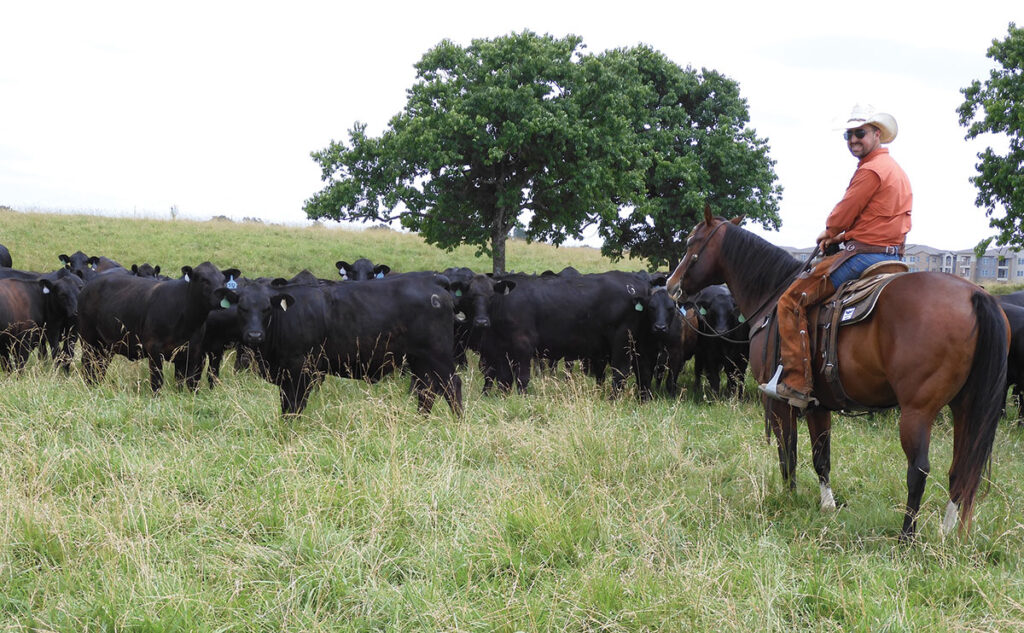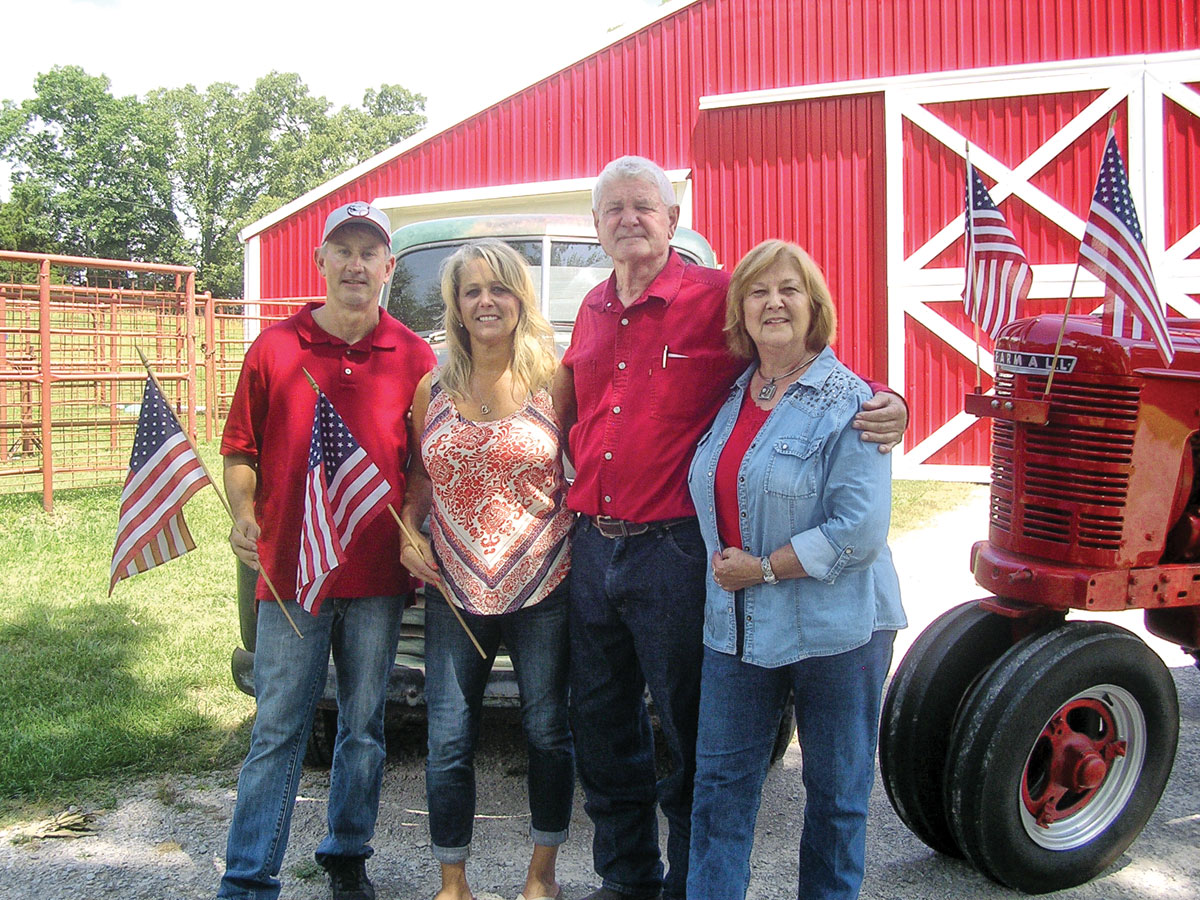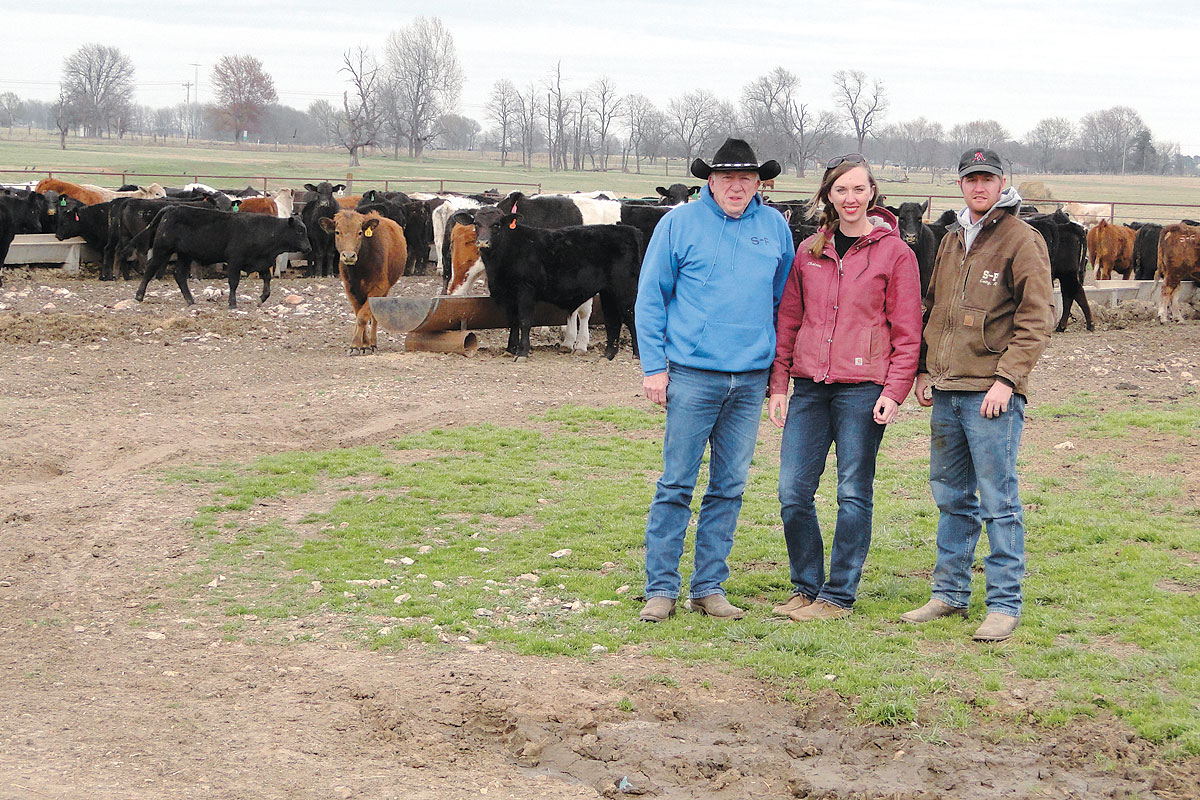
Daniel Potter says his mission with the George family is to help feed the world
BENTONVILLE, ARK. – Daniel Potter was raised on a small horse farm in Bentonville, Ark., with generations of farmers and ranchers on both sides of his family. Though professionally a food safety scientist, Daniel’s father, Dr. Bill Potter, loved training horses and roping calves competitively.
His mother, Kathy and his uncle, David Kruckemeyer, were raised around generational Texas hill country ranches.”
Daniel attended Missouri State University in Springfield, Mo., for both his undergraduate and masters degrees. While there, he was a member of the ranch horse team and traveled extensively with the successful team. He also served an internship on a 20,000-acre ranch in remote northern Colorado.
“I still help them out seasonally when I can,” Daniel said.
Daniel’s first position out of grad school was managing a bull AI facility in Stillwater, Okla., before being hired by the University of Arkansas as the ranch horse team coach and instructor for the hands-on horse and cattle classes. In his first year at U of A, the team was the D-II reserve national champions and then repeated D-II national championships in 2017 and 2018. While Daniel loved his time at U of A, he wanted to ranch fulltime and went to manage a cattle and horse operation for the two years. In the fall of 2020, he was offered the position of cattle operations manager for George’s Inc.
“Our goal is to raise quality cattle and take care of the land, all of which is part of our mission to help feed the world with quality food,” Daniel explained.
Daniel appreciates being trusted to make operational decisions and receives outstanding support from the executive leadership. Fifth-generation George twins, Asher and Garrick, are typical examples of the family’s work ethic and dedication. The 12-year-old boys help Daniel once or twice a week to learn the hands-on part of the cattle industry which includes fencing, cleaning pens, vaccinating cows, pulling calves, gathering cattle horseback or whatever else is on the agenda for the day.
Daniel is a believer in using horses and other low-stress cattle handling techniques, techniques he enjoys teaching to the boys.
In my opinion, life doesn’t get any better than handling cattle with good horses and a good dog. Adaptation to every setup and situation is essential, and Asher and Garrick get to see it and help firsthand,” he said.
The George operation runs 600 grass- and hay-fed cows and young heifers. Production calves are sold to mostly regional feedlots or stockers, depending upon size, with cattle and hay grounds located on more than 20 locations throughout Northwest Arkansas.
The mixed Angus and Brangus herd is mostly naturally bred. Daniel says even though Brangus handle Arkansas’s summer climate well because of their heat tolerance and insect resistance, more Angus genetics are being reintroduced to increase docility and carcass characteristics.
“Our goal is to raise quality cattle and take care of the land, all of which is part of our mission to help feed the world with quality food.”
— Daniel Potter
George’s has two calving seasons with the spring calving herd being larger. Daniel is currently considering moving toward all spring calving because weaning calves before winter decreases annual hay and supplement requirements since cows are not lactating. Another savings is less human labor, and wear on trucks and equipment because fewer trips are needed to the pastures for feeding. Daniel readily admits that calving in two seasons earns two checks per year instead of one and requires less extensive weaning and shipping facilities.
The George’s Cattle Department runs on a three-man crew with support from other departments, including the company truck maintenance shop, CDL haulers and maintenance teams.
Daniel attributes being able to run the operation with only a three-man crew to his team’s expertise, wisdom and willingness to work until the job is done. Marcelo Tinajero has been with the operation for 20 years and Preston Davis for five.
“Because three heads are a lot better than one, we constantly brainstorm and usually end up with the best plans and solutions,” Daniel explained.
Cow herds are generally divided by age and calving season. A common practice is selling bred cows approaching 10 years old while they still have value, with the best heifer calves retained to take their places. All cattle receive high-quality grass and hay, a comprehensive vaccination and health program and adequate mineral supplementation.
“Vaccination programs pay back in the long haul because it pays for itself because of the subsequent decrease in death loss, pregnancy loss and an increase in overall health,” Daniel said.
Daniel believes “you cannot manage what you don’t measure” and strives for efficient and practical practices including using a program called CattleMax. It provides detailed information on the herd in each pasture such as calving and weaning dates and vaccination and health histories as well as calf parentage, pasture rotations, etc. The precise information is used to measure the effectiveness of each phase of the operation to successfully maximize herd and land production.
Land stewardship is at the heart of a productive cow/calf program. Hay ground is fertilized with commercial fertilizers to relieve excess phosphorus level. Hay production is between 2,000 and 3,000 bales annually. Good forage makes for good cattle and good forage requires avoiding overgrazing, rotating pastures as much as possible and implementing weed control.
The main ranch and headquarters are located in urban Springdale, Ark. Occasionally transitioning land into development makes sense both practically and financially, a process made possible by the George family’s foresight in investing land through much of their history.
“Urban ranching can have challenges such as storms blowing down fences in the middle of neighborhoods and residential dogs bothering the cattle.” Daniel said. “Nonetheless there are advantages as well including quick parts availability when things break down or the opportunity to grab a good cup of coffee on the go.”







